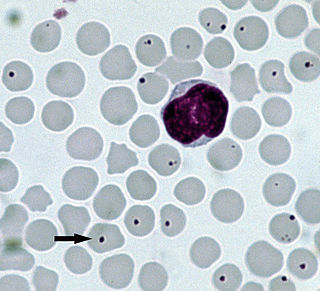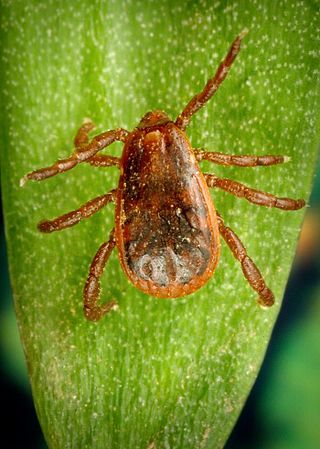| Disease | Vector | Causative organism | Host | Symptoms | Area | Treatment |
|---|
| African horse sickness | Culicoid midge | Orbivirus (virus) | Equids | Fever, lung, heart or mucous membrane symptoms. | Europe, Africa | Vaccination |
| Babesiosis | Tick | Babesia (protozoan) | Humans, rodents, dogs, cattle | Fever, hemolytic anemia, chills, sweating, thrombocytopenia | South Europe, Central United States | Antibiotics |
| Bluetongue disease | Culicoid midge | Orbivirus (virus) | Cattle, sheep | Fever, salivation, swelling of face and tongue | Europe, Africa | Vaccination |
| Chagas disease (American trypanosomiasis) | Various assassin bugs of subfamily Triatominae | Trypanosoma cruzi (protozoan) | | Mild symptoms, then chronic heart or brain inflammation | Central and South America | Antiparasitic drugs; treatment of symptoms |
| Chikungunya | Mosquito | Chikungunya virus | Human | Abdomen pain, eye pain, joint pain, muscle pain, fever, chills, fatigue, headache, skin rash | Asia | Antibiotics |
| Dengue fever | Mosquito | Flavivirus (virus) | | Fever then arthritis | (Sub) tropics and South Europe | Observation/supportive treatment |
| Dirofilariasis | Mosquito | Dirofilaria | Dogs, wolves, coyotes, foxes, jackals, cats, seals, sea lions, muskrats, bears, rabbits, raccoons, reptiles, beavers, ferrets, monkeys, | Chest pain, fever, pleural effusion, cough, nodules under the skin or lung granulomas | Worldwide | Heartworm medicine |
| Tick-borne encephalitis | Tick | Tick-borne encephalitis virus | | Ill with flu then meningitis | Central and North Europe | prevention and vaccination |
| Heartland virus disease | Tick | Heartland virus | | Fever, lethargy, headache, myalgia, diarrhea, nausea, loss of appetite, anorexia, thrombocytopenia, leukopenia, arthralgia | Missouri and Tennessee, USA | Supportive treatment |
| Leishmaniasis | Sandfly | Leishmania (protozoan) | | Fever, damage to the spleen and liver, and anaemia | South hemisphere and Mediterranean Countries | Treatment of infected |
| Lyme disease | Tick | Borrelia burgdorferi (bacterium) | Deer, human | Bull's-eye pattern skin rash around bite, fever, chills, fatigue, body aches, headache, joint pain. Sometimes neurological problems. [1] | Europe, North Africa, and North America | Prevention and antibiotics |
| Malaria | Mosquito | Plasmodium (protist) | Human | Headache then heavy fever | (Sub) tropics | Prevention and anti-malaria |
|
| Plague | Flea | | Rats, Human | Fever, weakness and headache. In the bubonic form there is also swelling of lymph nodes, while in the septicemic form tissues may turn black and die, and in the pneumonic form shortness of breath, cough and chest pain may occur | Central Asia, India, US, Africa, Peru, Brazil | Antibiotics |
Pogosta disease
Synonyms:
Karelian fever
Ockelbo disease
Sindbis fever | Mosquito | Sindbis virus | | Skin rash, fever, in severe cases - arthritis | Scandinavia, France, Russia | unknown |
Rickettsial diseases:
Typhus
rickettsialpox
Boutonneuse fever
African tick bite fever
Rocky Mountain spotted fever etc. | Tick, mite, lice | Rickettsia species (bacteria) | | Fever with bleeding around the bite | Global | Prevention and antibiotics |
| Tularemia | Deer flies, ticks | Francisella tularensis (bacterium) | Birds, lagomorphs, rodents | Skin ulcer, swollen and painful lymph glands, fever, chills headache, exhaustion | North America | Streptomycin, gentamicin, doxycycline, ciprofloxacin |
| African trypanosomiasis (sleeping sickness) | Tsetse fly | Trypanosoma brucei (protozoan) | Wild mammals, cattle, human | Fever, joint pain, swollen lymph nodes, sleep disturbances | Sub-Saharan Africa | Various drugs |
| Lymphatic filariasis | Mosquito | Wuchereria bancrofti | Human | Fever, swelling of limbs, breasts, or genitalia | Africa, Asia. | Various drugs |
| West Nile fever | Mosquito | West Nile virus | Birds, human | Fever, headaches, skin rash, body aches. | Africa, Asia, North America, South and East Europe | None |
| Yellow fever | Mosquito | Yellow fever virus | Human | Muscle pain, abdomen pain, loss of appetite, fatigue, jaundice, fever, chills, headache, nausea, vomiting, bleeding, delirium | South America, Africa | Yellow fever vaccine |
| Zika fever | Mosquito | Zika virus | Monkeys, human | Fever, eye pain, conjunctivitis, rash, headache, vomiting, joint pain, muscle pain, fatigue, chills, sweating, loss of appetite | South America, Mexico, Asia, Africa | Decreasing mosquito bites, condoms |










